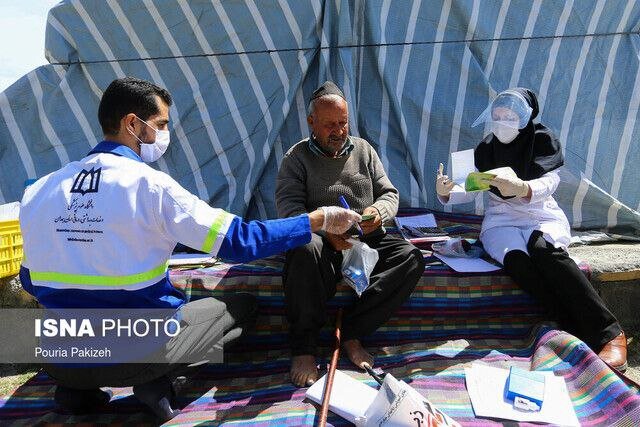Health houses revolutionize health sector

TEHRAN –Health houses and networks are providing primary health care (PHC) services all over the country, including most remote areas, thanks to which the health system has been frequently lauded by the World Health Organization (WHO) as a role model for many other countries.
The development of health houses in Iran dates back to years after the Islamic revolution (1979). The first health houses were established in 1985 to promote health indices by making PHC services accessible to all individuals, particularly in rural and less privileged areas, with the help of nurse aids, ISNA reported.
Currently, 18,000 health houses with over 28,000 nurse aids are operating in the country. At least, one health house is available for every 700-1500 people while mobile medical units cover less populated areas.
Health houses and nursing aids are responsible for promoting health by training communities on how to prevent and address epidemics, communicable and non-communicable diseases, injuries, and disasters.
Screening the targeted population, providing nutrition care, prenatal care, vaccination, and immunization, monitoring environmental and occupational health standards, as well as students’ health and wellbeing at schools are among other services offered by nurse aids; all these services are free of charge.
Thanks to their efforts the mortality rate among pregnant women and children under the age of five has significantly declined, and life expectancy has increased.
In addition, over 6,000 centers are providing comprehensive health services, that is a center for every 13,000 individuals. Also, there are more than 5,000 health bases offering healthcare services in the country.
By referring to health houses, people receive services from nutritionists, dentists, and mental health experts, and benefit from para-clinical and pharmaceutical services in comprehensive health centers.
These centers also provide diagnostic, therapeutic, and rehabilitation services, elective and emergency surgeries, clinical procedures, pharmaceutical and laboratory services, and imaging.
Nationwide implementation of Family Physician Program
The Family Physician Program was started in 2005, which targeted almost 25,000,000 citizens residing in rural areas, and was piloted in two provinces of Fars and Mazandaran.
Periodic examinations and monitoring of people’s health status, easy and round-the-clock access to basic services and primary care, and frequent visits to doctors are the characteristics of a family physician.
Based on the Family Physician Program, a physician and a midwife offer services in rural areas, every 3,300 villagers have a physician and there is a midwife per 5,200 people in villages.
The implementation of the family physician program in urban areas began in June 2012 in Fars and Mazandaran provinces. Reducing out-of-pocket payments has been an important effect and benefit of the urban family physician program. A total of 20,263,501 persons have been covered by the Family Physician Program, which constitutes 40 percent of the target population in cities.
The current administration is determined to implement the Family Physician Program nationwide in the next Iranian calendar year 1404 (March 2025 – March 2026). To launch the program a budget of 850 billion rials (around 1,063 million dollars) is needed.
Once implemented, there will be a physician, and a healthcare provider for every 3,000 and 1,500 people, respectively.
In the first phase, four universities in Fars (Fasa county), Mazandaran, Khuzestan (Dezfoul), and Tehran (Eslamshahr) provinces have been chosen to implement the program.
Iran's health system has always prioritized prevention over treatment as its main objective which can come true via strengthening and rebuilding the country’s health care networks, implementing Family Physician Program, and referral system nationwide, as well as promoting health literacy and self-care.
‘Iran’s health sector a role model’
President Masoud Pezeshkian has called the country’s health system a role model in the region and even the world thanks to its unique, particularly primary healthcare, services.
The official made the remarks on January 2nd, in a letter addressing a national seminar held in Mashhad to honor healthcare staff including nursing aids.
Lauding the substantial progress made in the health sector, the president said these remarkable achievements are the results of health workers’ ceaseless efforts, such as providing vaccination and prenatal care for pregnant mothers, controlling infectious diseases, promoting health education, sharing knowledge, and training new generations of health staff nationwide.
The notable increase in life expectancy, reduction in infant mortality rate, control of infectious diseases, and reduction in complications from chronic diseases are all due to health workers’ dedication and commitment.
Pezeshkian also commended the ongoing health programs such as universal health coverage and family physician programs, which have made comprehensive and continuous healthcare accessible to millions.
The president went on to say that the administration recognizes the untiring efforts and services of all health workers, and is determined to elevate the country’s health system to its rightful and deserving position, utilizing health workers’ valuable capacities and potentials.
In October 2024, the World Health Organization’s (WHO) director for the Eastern Mediterranean Regional Office (EMRO) called Iran’s health sector a role model in the region.
WHO EMRO is interested in expanding cooperation with the Islamic Republic of Iran, IRNA quoted Hanna Hasan Balkhi as saying.
The official made the remarks in a meeting with Alireza Raeisi, the Iranian deputy health minister, and Mohammad-Hossein Niknam, the deputy health minister for international affairs, on the sidelines of the Seventy-first session of the WHO EMRO.
A delegation led by Health Minister Mohammad-Reza Zafarqandi participated in the seventy-first session of the WHO EMRO which was held in Doha, Qatar, from October 14 to 17.
“During my short visit to Iran a few months ago, I became familiar with the capabilities of Iran in the health sector; Iran is a role model in health in the region,” Balkhi noted.
“Utilizing full potentials available in the [regional] countries is essential for us, and we will not hesitate to support the implementation of health programs,” the official noted.
Raeisi, for his part, enumerated priorities in the country’s health sector, namely completing the implementation of the Family Physician Program and the electronic health record program.
Leave a Comment